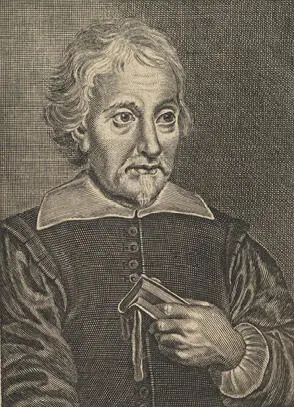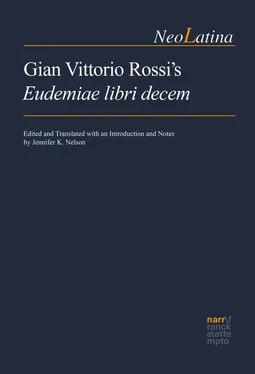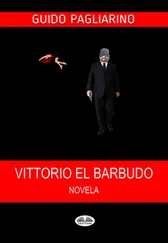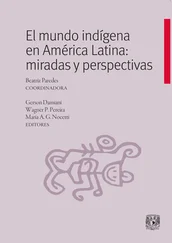Membership in the Accademia degli Umoristi was not limited to Rome’s elite; in fact, the rules stated that membership was open to any persons who were “considered worthy based on their nobility of blood, their superior literary abilities, or … excellence in any respectable art form.”13 That being said, from its very beginning the Academy did attract members of Rome’s most important families such as the ColonnaColonna, Pompeo and the Barberini. One of its most prominent members was that most famous Barberini, Maffeo—Jesuit educated and a recognized Neo-Latin poet—who in 1623 became Pope Urban VIIIUrban VIII, Pope. Marc FumaroliFumaroli, Marc refers to Urban VIII as “CiceroCicero, Marcus Tullius pontifex maximus” (Pope Cicero), explaining that Neo-Latin literature experienced its second great Renaissance under his influence.14 It was thanks to Urban VIII and the powerful Barberini family that the Accademia degli Umoristi, along with the scientific Accademia dei Lincei and the Jesuit Collegio Romano, became a driving cultural force in the seventeenth century, not just in Rome, but throughout Europe.15
Through his participation in the Accademia degli Umoristi, RossiRossi, Gian Vittorio came in contact with, as GerboniGerboni, Luigi describes, “the flower of Rome’s citizenry” gaining respect for his literary and linguistic abilities.16 The writers, scholars, and intellectuals he met through the Academy became the basis for many of the biographical profiles in his Pinacotheca imaginum illustrium , but also material for characters in Eudemia . These include, most prominently, a description of an Academy meeting in Book Three where Eudemia’s intellectual elites gather to recite their poetry. It is also because of his participation in the Accademia degli Umoristi that Rossi became acquainted with Fabio Chigisee Alexander VII, Pope (later Pope AlexanderAlexander (Alessandro Damasceni Peretti di Montalto) VIIAlexander VII, Pope), who would become his most important friend and correspondent, as well as being instrumental in his eventual publishing success.
In a 1646 letter to the Dutch scholar Guilelmus MoonsiusMoonsius, Guilelmus, RossiRossi, Gian Vittorio credited his reputation as a Latinist for the fact that, around 1607, he was offered a position in the Roman Curia, explaining that Marcello VestrioVestrio, Marcello, Secretary of Latin Briefs under Pope Paul VPaul V, Pope, had been impressed after hearing Rossi declaim at an Academy meeting.17 In the same letter, Rossi informed Moonsius that (by his own estimation) he made quite a name for himself in that job, remarking that “whenever anything a little more polished or elegant was issued by Vestrio’s office, everyone reckoned that it had been produced and executed largely thanks to my ingenuity and effort.”18 This job lasted only eight months, however, before Vestrio took ill and died.
Around 1608, RossiRossi, Gian Vittorio received a firm job offer as secretary to Cardinal Giovanni Garzia MelliniMellini, Giovanni Garzia, who had been appointed papal legate to Germany, but that would have meant relocating to another country and away from his beloved Rome. As it turned out, he made it as far as the town of Caprarola (about sixty kilometers north of Rome), came down with a fever, and had to be sent home.19 Indeed, he never was able to secure a permanent position within the Church. Rossi blamed his difficulty in securing steady employment on the fact that individuals in positions of power purposefully kept him out because they were jealous of, and intimidated by, his superior abilities.20
RossiRossi, Gian Vittorio’s longest period of employment lasted from 1610 to 1623, when he served as the private secretary to Cardinal Alessandro Damasceni Peretti di MontaltoPeretti di Montalto, Alessandro Damasceni.21 Rossi characterized this as a low point in his life, during which he spent more than a decade doing a thankless job for a thankless employer. In a 1637 letter to Ugone UbaldiniUbaldini, Ugone, Rossi described Peretti as “extremely heartless” (“inhumanissimus”) because he not only had to pay for medical care out of his own pocket when he fell ill while in Peretti’s employ, but Peretti never even asked after him to see if he needed anything.22 In Eudemia Peretti makes a memorable appearance as a nobleman named PlusiusPlusius (Alessandro Damasceni Peretti di Montalto), an inattentive, unappreciative, and miserly boss to a long-suffering and overworked secretary named Nicius RufusNicius Rufus (Gian Vittorio Rossi).23
RossiRossi, Gian Vittorio retreated into private life after Peretti’s death in 1623. In the early 1630s he moved to a house in the Monte Mario neighborhood of Rome, where he spent the rest of his days.24 There is no evidence of his having steady employment after that. GerboniGerboni, Luigi assumes that he enjoyed some level of financial stability, however, since he was able to donate funds for the construction of a small church on Monte Mario dedicated to Santa Maria della Febbre e del Rosario. Rossi bequeathed this church to the monastery of Saint Onuphrius, and it still exists today as the Chiesa della Madonna del Rosario.25 In addition, sometime before 1630 he had purchased the honorary office of Commissioner of the Aqua Marrana, which came with no responsibilities but yielded a modest annual income of 98.85 scudi.26 This financial independence allowed Rossi to spend the remainder of his life focused on writing and publishing.
As evidenced in his letters, RossiRossi, Gian Vittorio was an active participant in the Republic of Letters, the pan-European intellectual community that fostered humanistic studies and the exchange of ideas via epistolary correspondence. He cultivated friendships with fellow humanists in such places as Italy, France, Germany, and the Low Countries. In his personal life, however, Rossi chose to remain alone, never marrying or having children. GerboniGerboni, Luigi points to one of his dialogues for a clue as to why, citing an interlocutor named Iucundus who, when asked why he never married, explains that the main two reasons were fear of losing his freedom to a carping wife, and fear that she would give birth to children who were bow-legged, knock-kneed, squinty-eyed, buck-toothed, and ill-behaved.27 Gerboni concedes that these assertions were made primarily for humorous effect, and he surmises that the real reason was probably that the majority of educated laymen aspiring to a career in the Roman Curia tended not to marry, surrounded as they were by clerics28 (of course, it is also not out of the question that Rossi was homosexual). On the other hand, Rossi never entered the priesthood, which Gerboni ascribes to a similar fear of losing his liberty, and also to the fact that he ultimately did not feel a strong spiritual calling to such a life.29 Rossi died at the age of seventy on November 13, 1647, and was buried in the church he founded on Monte Mario. He left his estate to the caretakers of that church, the Poor Hermits of Blessed Peter Gambacorta of Pisa, of the monastic order of Saint Onuphrius, who memorialized him with this inscription: “Ioanni Victorio Roscio / Iani Nici Erythraei nomine / apud externos notissimo / huius domus et ecclesiae / munificentissimo fundatori.”30
Gian Vittorio RossiRossi, Gian Vittorio: vita
| 1577 |
Born in Rome. |
| ca. 1582–94 |
Educated at the Jesuit Collegio Romano. |
| 1596 |
Completes studies in the law. |
| ca. 1598–1602 |
Legal apprenticeship under Lepido Piccolomini. |
| ca. 1602 |
Joins the Academia Humoristarum (Accademia degli Umoristi). |
| 1603 |
Publishes first work, titled Orationes novem (Romae: Apud Aloysium Zannettum). |
| 1607–8 |
Works in the Secretariat of Latin Briefs under Marcello Vestrio, Secretary of Latin Briefs for Pope Paul V. |
| 1610–1623 |
Employed as private secretary ( a studiis ) to Alessandro Damasceni Peretti di Montalto. |
| 1626 |
Meets Fabio Chigi for the first time, at a gathering of the Accademia degli Umoristi. |
| ca. 1630 |
Moves to the Janiculum Hill neighborhood of Rome retiring to a life of study and writing. |
| 1637 |
Publishes Eudemiae libri VIII ([Leiden]: [Bonaventure and Abraham Elzevier]). |
| 1641 |
Begins friendship and correspondence with Fabio Chigi, which lasts until his death. |
| ca. 1644 |
Moves to the Monte Mario neighborhood of Rome. |
| 1645 |
Publishes Eudemiae libri decem (Coloniae Ubiorum [i.e., Amsterdam]: Apud Iodocum Kalcovium [i.e., Joan Blaeu]). |
| 1647 |
Dies in Rome on November 13 and is buried at the church he founded on Monte Mario dedicated to Santa Maria della Febbre e del Rosario. |
 Fig. 1:
Fig. 1:
Читать дальше

 Fig. 1:
Fig. 1:










